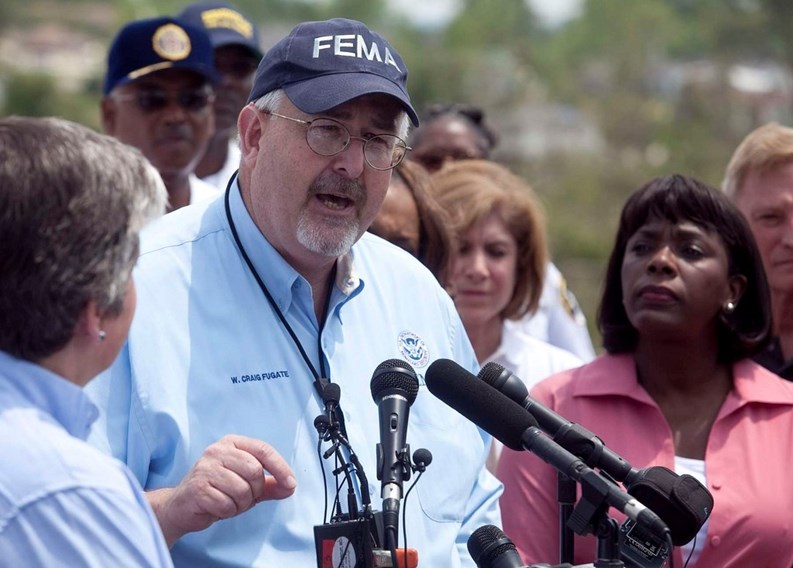*Editor's note: In anticipation of Hurricane Irma's possible landfall in Florida later this week, The South Florida Cooperator is featuring a selection of past articles on storm preparation, emergency planning, and post-storm clean-up. Florida readers are encouraged to pay close attention to federal, state, and local emergency information sources, follow any and all preparation and evacuation orders, and most of all, stay safe!
While natural disasters have impacted the United States for countless decades—from The Great San Francisco Earthquake of 1906 to 2005’s Hurricane Katrina—these catastrophic events are seemingly occurring with a more severe frequency.
Last year, as news of Hurricane Sandy began to break, Florida’s Governor Rick Scott Governor Rick Scott addressed not only Floridians but those states that would be in Sandy’s path. “Florida’s emergency managers are experienced in protecting our 19 million residents and millions of visitors each year. Our emergency management staff, National Guard, emergency response equipment and resources are on standby to support our fellow East Coast states, in the event they are needed,” he stated. “Many of Florida’s private-sector companies are also answering the call to help fellow Americans. The thoughts and prayers of our state are with those in the storm’s path.”
Thoughts and prayers notwithstanding, when the worst is realized the Federal Emergency Management Agency (FEMA) is the one government entity that can offer direct aid. “Once a disaster has occurred, and the state has declared a state of emergency, the state will evaluate the recovery capabilities of the state and local governments,” says Howard J. Perl, a senior attorney with the Margate-based law firm of Katzman Garfinkel & Berger.
FEMA was created under President Jimmy Carter’s administration officially launching on April 1, 1979 and is an agency of the United States Department of Homeland Security. With a primary purpose of coordinating disaster response relief efforts, state governors are only eligible for federal support once a state of emergency is declared.
“If it is determined that the damage is beyond their recovery capability, the governor will normally send a request letter to the president, directed through the regional director of the appropriate FEMA region,” says Perl. “The president then makes the decision whether or not to declare a major disaster or emergency.”
Along with fund and on-site disaster recovery support, FEMA also provides local and state government officials with experts in specialized fields and funding for rebuilding efforts. In addition, FEMA provides funds for training of response personnel. FEMA also directs individuals to access low interest loans in conjunction with the Small Business Administration.
“After a presidential declaration has been made, FEMA will designate the area eligible for assistance and announce the types of assistance available,” says Perl. “FEMA provides supplemental assistance for state and local government recovery expenses and the federal share will always be at least 75 percent of the eligible costs.”
How to React to a Natural Disaster
The state of Florida is unfortunately not a stranger to devastating weather events. Last year, tropical storms Debby and Beryl caused deaths and destruction, and Hurricane Sandy in October was a near miss. In 2005, the state wasn’t as lucky with Hurricane Wilma causing in excess of $20 billion dollars in damage.
Trying to respond to immediate needs following the shock and awe of such storms often leaves residents perplexed and disenfranchised. However, board members, manager and condominium owners should take proactive steps and understand what is available to them should such an event occur.
“I encourage all associations to have a disaster plan. Part of having a good plan is having before and after photos pertaining to the condition of the property. It has been my experience living in Broward County that media provides contact information for FEMA after a disaster,” says Wendy Murray, CEO and president of the Fort Myers-based property manager Associa Gulf Coast.
“If an association does not have FEMA’s contact information in their disaster plan then local media usually has it. My HOA was impacted by Hurricane Wilma and lost hundreds of trees, thousands of hedges as well as gate, electrical and fence damages,” says Murray. “One should assess the damages, prioritize the urgencies then contact FEMA with their needs and priorities. During Hurricane Wilma, the city of Miramar had already communicated with FEMA to arrange the debris removal from gated communities as well as non-gated. Local governments often arrange this before the event so as to be proactive.”
With decades of experience in community property management in South Florida, Murray encourages communities to contact their local government to determine standing agreements with FEMA because it can be difficult to obtain all necessary information after a storm event. “FEMA also communicates via media as to distribution areas/centers for immediate supplies and information distribution,” says Murray. “Having a solar or battery-powered radio or television helps residents to receive timely information as to FEMA distribution sites and location of representatives locally.”
To better assist its clients, Associa Gulf Coast provides “Hurricane Guide Disaster Preparedness for Community Associations,” a guide that is updated each year. A good disaster plan should include a chain of command for communications. And while all board member contact information should be provided, the suggested call list is as follows: board president, property manager and vice-president.
Murray explains that it is important for boards and managers to should assure that elevators and lift stations are serviced months before storm season. Equally important is to know where shut off valves are and if generators are in working order.
“Copies of insurance policies should be with the plan as well as information on filing claims. These should be included as you may not have access to these items timely. Having them included helps you initiate the claims process and provides you with coverage information on hand,” says Murray. “Evacuation plans, shelters, pet friendly shelters, generator powered gas stations and grocery stores should all be listed in the plan. Having this information included provides for a structured exit process and helps expedite processes.”
Understanding the Process
As is often the case with homeowners associations, different federal regulations apply than to residents living in an apartments or standalone homes. To this end, Perl explains that boards need to be educated and informed in order to address association member needs.
“Associations are not currently eligible for FEMA grants. However, associations are generally eligible for Small Business Administration low interest loans,” he says. “In regard to individual owners, if the home or its contents were damaged and the owner has insurance, he or she must to work through their insurance claim first and provide FEMA with a decision letter settlement or denial from the insurance company.”
Perl says when it is available, owners can register for FEMA assistance by telephone by calling 1-800-621-FEMA (3362), online at www.disasterassistance.gov or via a web-enabled smart phone application by visiting m.fema.gov and clicking “apply online for federal assistance.”
After FEMA has been contacted, a property site visit is required, which can take long periods of time depending on the severity of the storm and number of claims. “About 10 days after the inspection FEMA will decide if you qualify for assistance. If you qualify for a grant FEMA will send you a check by mail or deposit it in your bank account,” says Perl. “FEMA will also send you a letter describing how you are to use the money. For example, repairs to your home or to rent another house while you make repairs.”
Post storm reactions by impacted residents are often understandably erratic. In some cases, all or most of their worldly belongings have been lost. Murray explains that community associations should be prepared to provide accurate assessments of their properties and level of urgency as to immediate needs and recovery.
“One should not expect a lot of focus on non-essential items or areas that may be non-essential for operations or housing,” says Murray. “FEMA will prioritize their projects and attention based upon level of urgency. They will delegate staff and attention accordingly. As assessments and requests are made, it should be understood that resources may be limited short term and that FEMA’s priority list may differ than the associations.”
To reduce the disappointment level of those affected and awaiting assistance, it is recommended that associations ask FEMA for a point of reference, or a contact person, so response time and expectation levels can be adjusted accordingly.
Since FEMA doesn’t cover damages or losses already covered by private insurance (nor does the agency interact with insurance agents), impacted residents must first file a claim with their insurance carrier. After this process is undertaken, Perl explains that FEMA can be contacted if the insurance settlement is delayed; the insurance settlement is insufficient to meet disaster-related needs; the owner has exhausted the additional living expenses provided by the insurance company; or if the owner is unable to locate rental resources in their area.
“FEMA cannot provide funds to individuals for losses that are covered by insurance,” says Perl. Do not rely on a FEMA grant in lieu of proper insurance coverage. And while FEMA does not directly interact with an owner’s insurer, information from your insurer is critical and required by FEMA in order to determine if an owner qualifies for any FEMA aid, grants or other assistance.”
When FEMA isn’t Enough
After Hurricane Katrina, state, local and federal agencies were overwhelmed with distraught and displaced residents. As a result, a backlog of claims was realized. While not all homeowners are eligible for FEMA assistance, there are other options.
“The Small Business Administration often has grants available. The banking institution of the community association may have lines of credit or loans available. I encourage communities to be proactive in contacting their bank to inquire as to lines of credit available to their association should they need it, before disasters happen,” says Murray.
Perl also suggests that associations contact the U.S. Department of Housing and Urban Development (HUD), which may offer association’s assistance through its grant programs to local municipalities. “This is what was done in New York in the aftermath of Hurricane Sandy,” he says.
With regard to all severe weather related events, preparation is essential to circumventing post-storm fallout. “Having agreements in place with response and recovery vendors and a disaster plan in place is key to reducing the fear and anxiety of board members, residents and managers, says Murray. “I suggest communities have drills to test their plans, involve local emergency management or fire departments to help them test their plans and identify areas to improve,” she continues. “This way they can enter hurricane season with confidence in knowing they have a plan in place and know how to execute if necessary.”
W.B. King is a freelance writer and a frequent contributor to The South Florida Cooperator.







Leave a Comment